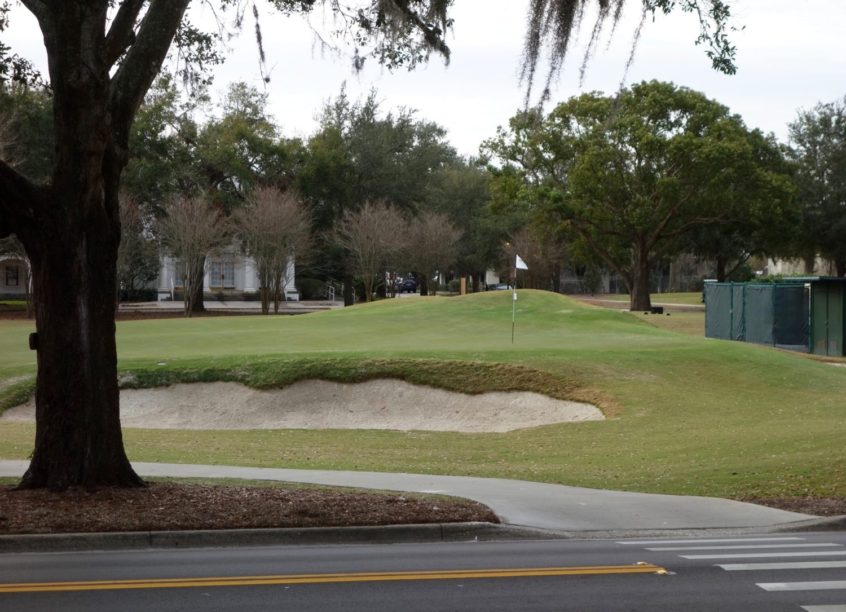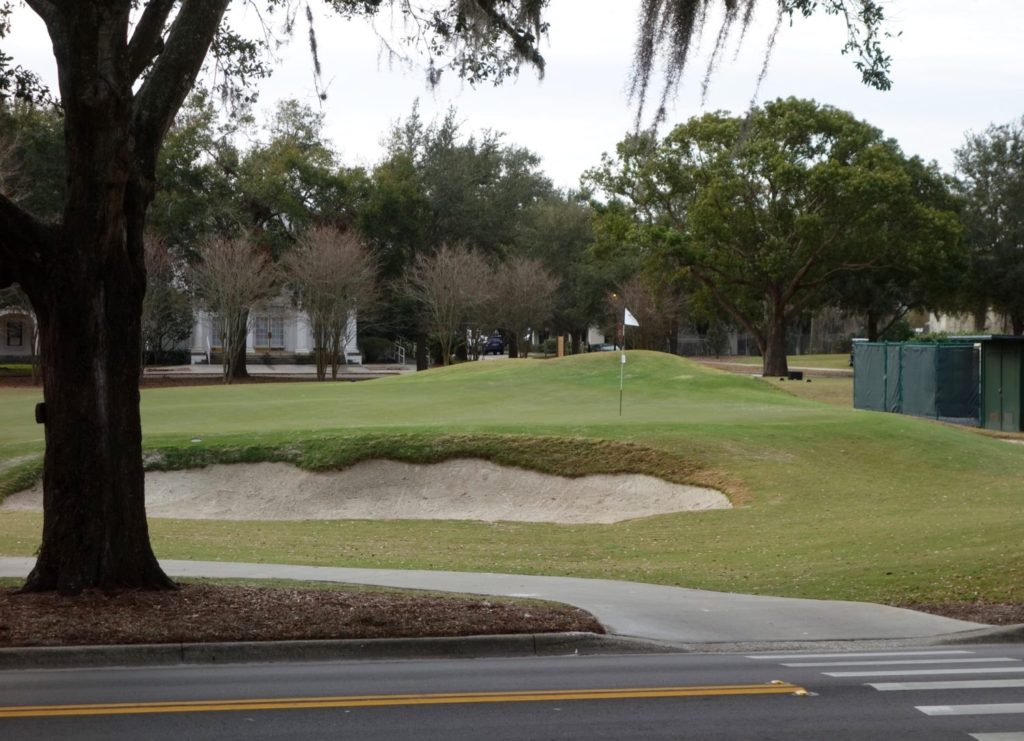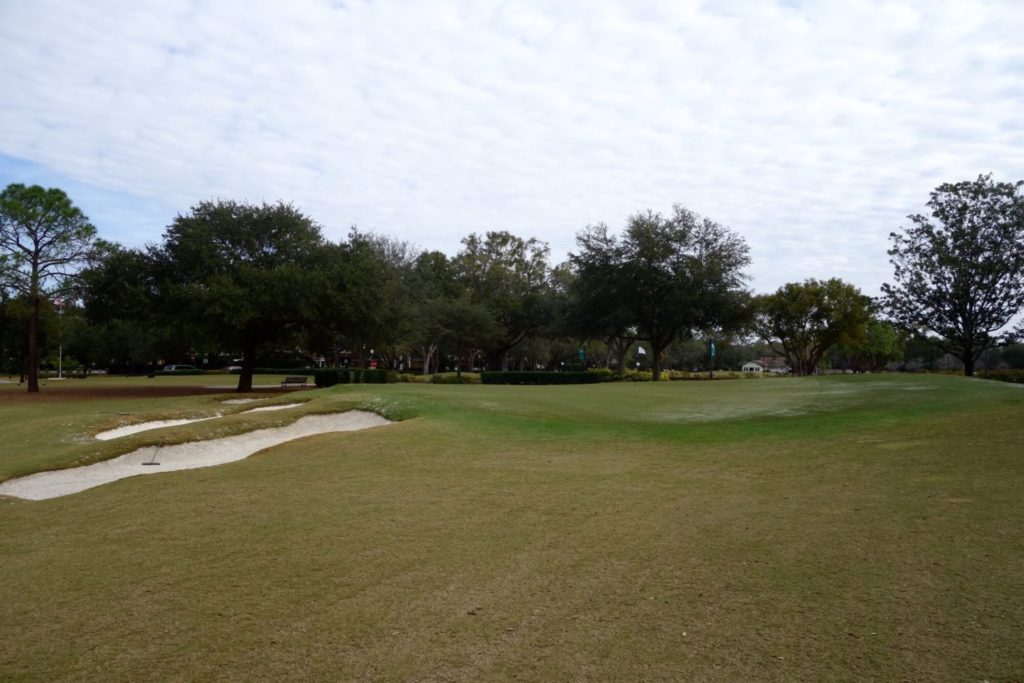Part of being a passionate golf traveler is having people always recommend destinations for the next trip. Occasionally, a place keeps coming up and when multiple knowledgeable golfers insist I see a certain course, my ears perk up. I must have had over a dozen people insist I see Winter Park over a year period, which put this nine hole course just outside of Orlando, Florida squarely on top of my to-see list.
Earlier this year I told the story of Winter Park in an issue of LINKS Magazine and rather than retell the details of the story here, I suggest you take a moment to read that article. The quick version is that Winter Park Golf Course, originally built in 1914, fell into a poor state in the modern era and was overgrown and riddled with turf disease by 2016. Around that time, the municipality decided to redesign the golf course and they hired two young architects – Keith Rhebb and Riley Johns – to create the new course.
Rhebb and Johns were shapers and design associates for some of the biggest names in golf and they brought the same methods and detail to Winter Park that you would see on much larger projects. With a limited budget and the support of the local municipality they focused on what was important – the golf course. There are no frills. A round costs around $16 and a trolley is another $3 to rent. It’s all you need and I desperately wish we had a course like Winter Park near us! Rhebb and Johns design skill and passion for the project lies at the core of why it was so successful.
The focus of the redesign was building and shaping nine terrific green complexes, all of which I can remember vividly months after the round. The team took a flat piece of land and created an interesting, fun, and challenging set of greens that any course would love to have.
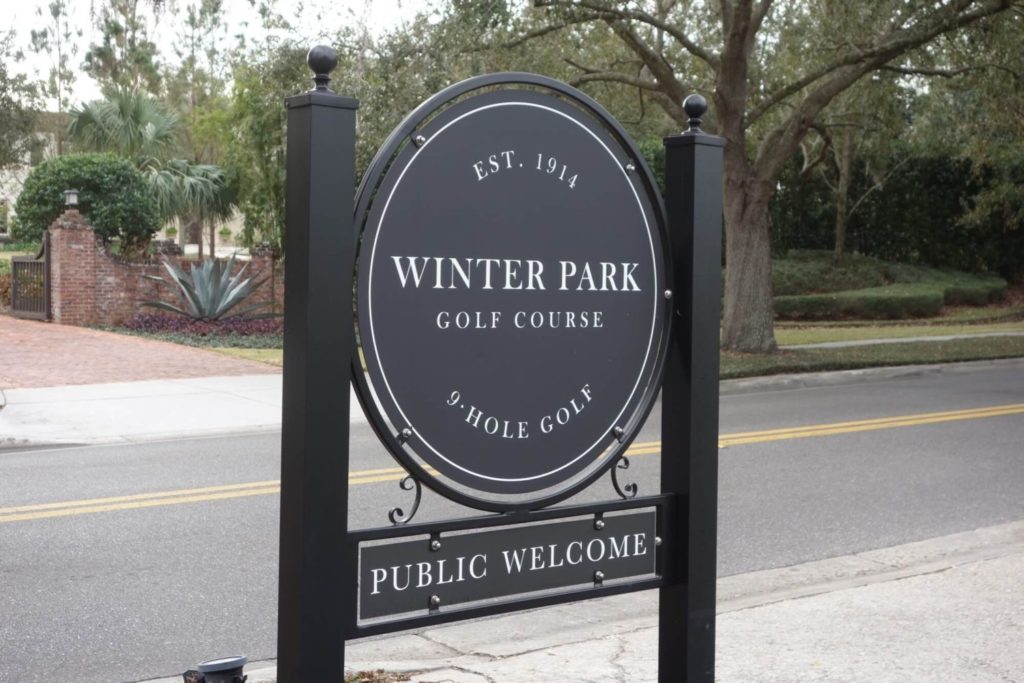
My favorite part of Winter Park is the relationship between the course and the surrounding neighborhood. They feel like a single unit with people running, walking dogs, and enjoying the scenery around the course. The design even loops around the local cemetery, which further embeds the neighborhood feel. It reminded me of Scottish courses like North Berwick or Elie where the courses feel like an extension of the towns. It also reminded me of the back nine of Asheville Municipal Golf Course – a Donald Ross design in North Carolina that I played often with friends growing up. In hindsight I wish Rhebb and Johns could have come up to give it the full treatment!
This review also brings up an important point that has developed with my site. The photos in this review aren’t great. It was an overcast January morning during my round and many of the views on the course look washed out in these pictures. While I would have loved to stick around to take a series of gorgeous sunset pictures, I’ve realized over the years that there is value in showing a golf course as it looks on any random day of play. All of that to say, here is what the course looked like on a Thursday morning in January!
Hole #1 – 241 yards – The green holds most of the interest on Winter Park’s opening hole. A ridge splits the putting surface into left and right halves, with a front bunker guarding the right side. The best approach angle is set up with a drive down the left.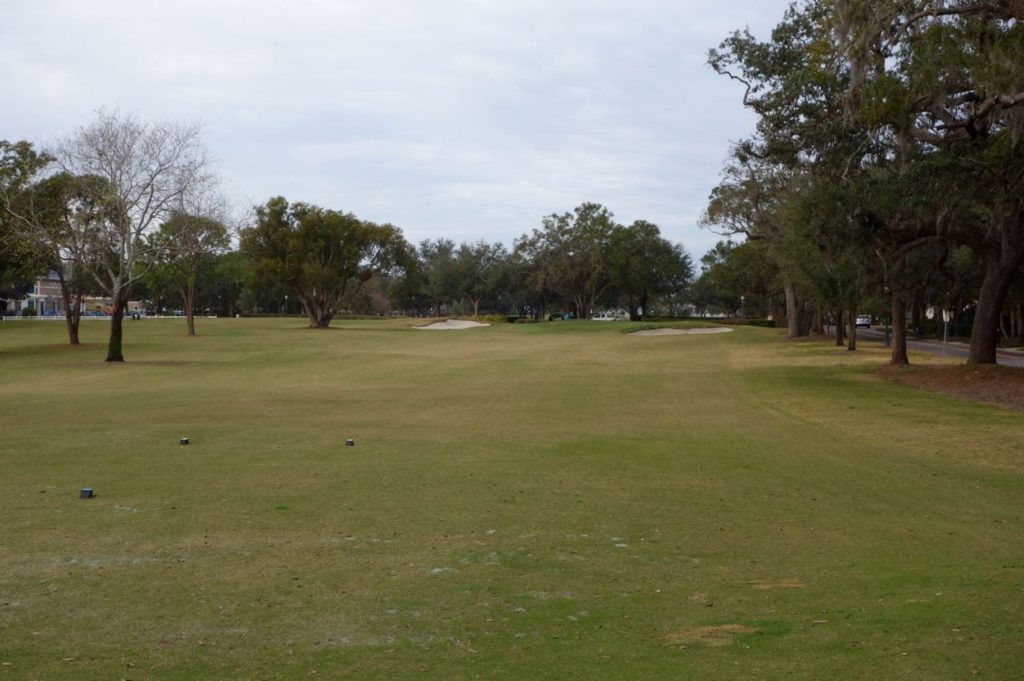
Hole #2 – 146 yards – A backstop on the left side of this green prevents balls from running over the back, but any shot long and right collects in a bunker over the green. You can get a better idea of this green’s shape in the second photo below taken from the right side. The backstop provides tons of fun options on this hole.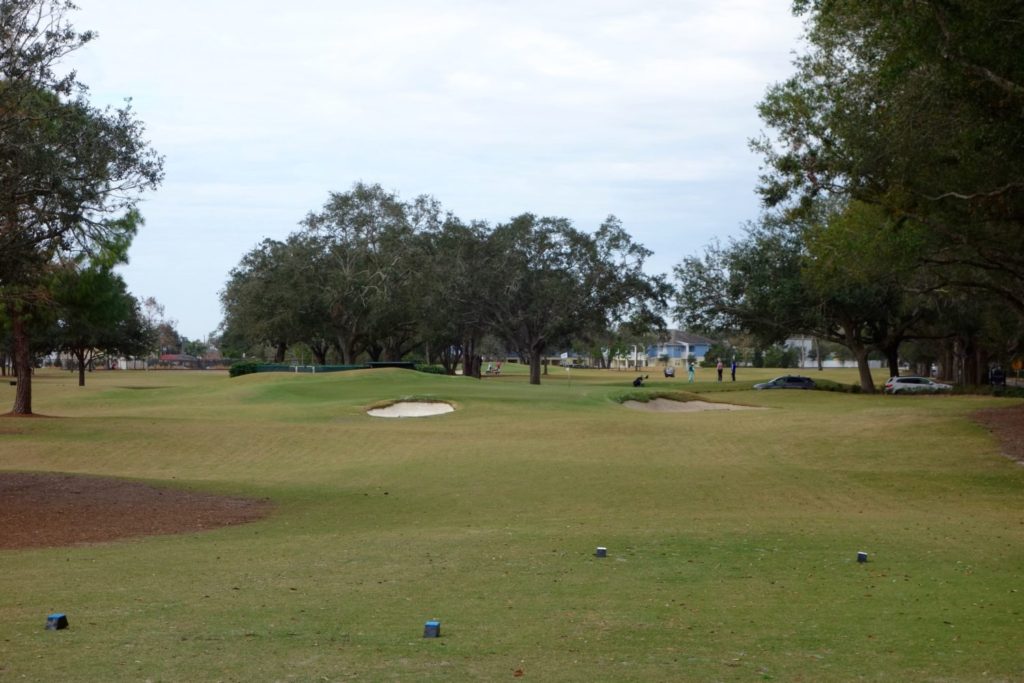
Hole #3 – 430 yards – A patch of trees on the right narrows this fairway at roughly 260 yards from the tee. From there the approach shot plays into a large green with a one bunker in front and one behind.
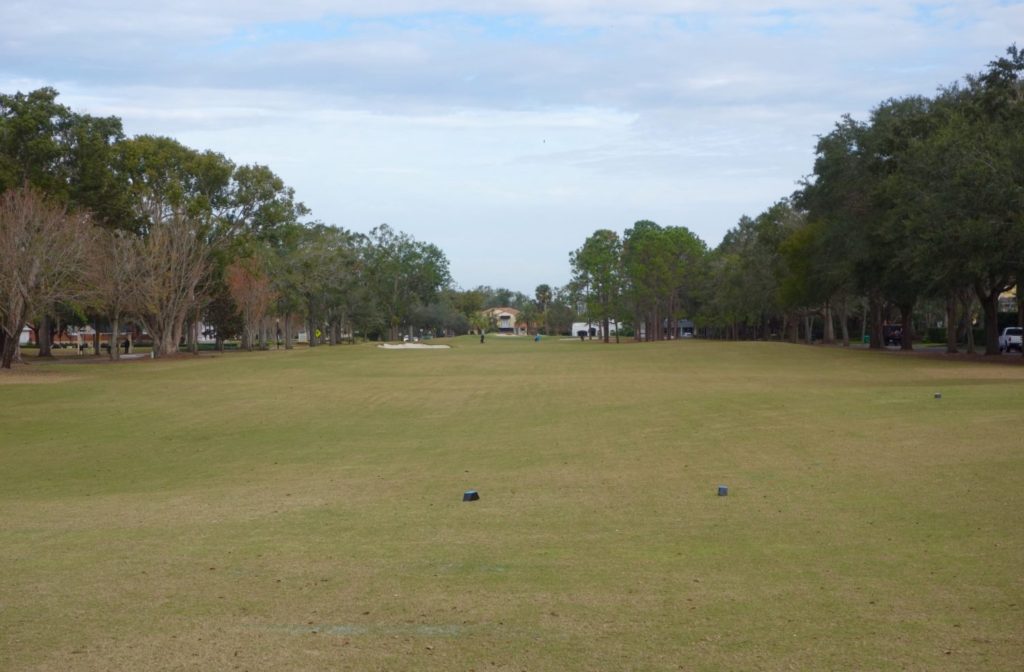
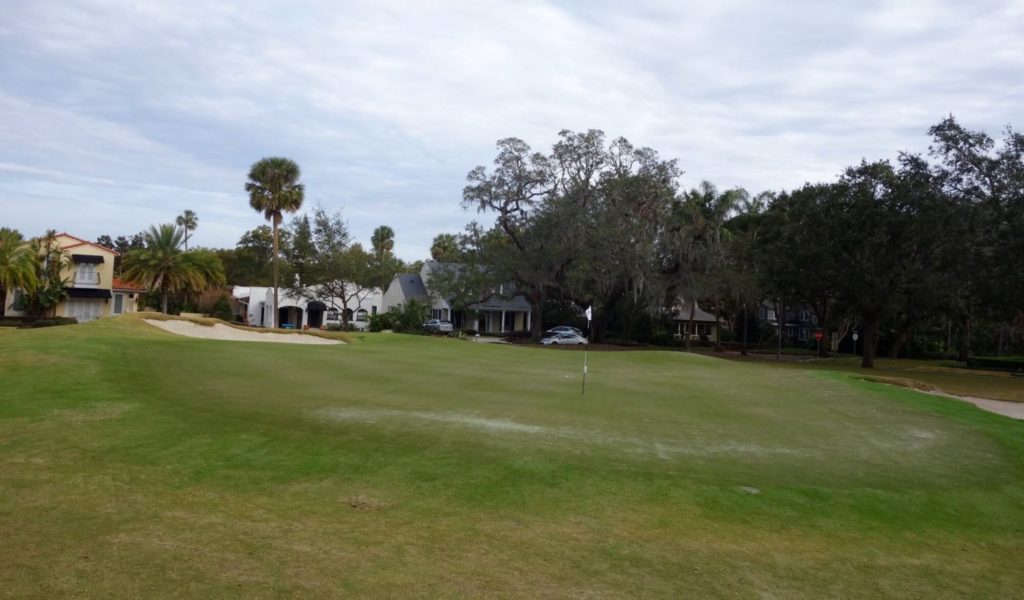
Hole #4 – 495 yards – The dogleg left 4th is one of my favorite holes on the course. A single bunker defines the inside of the dogleg and from there it’s a slightly uphill tee shot into a beautiful green. The green is guarded by multiple bunkers and is a masterclass in how shaping can turn flat land into something special.

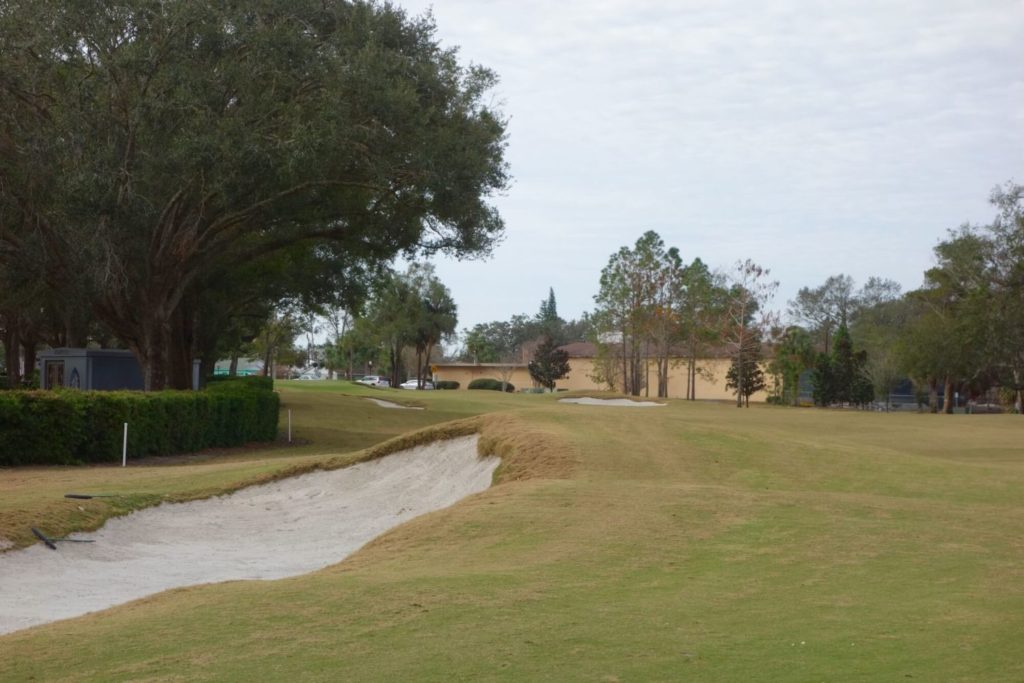
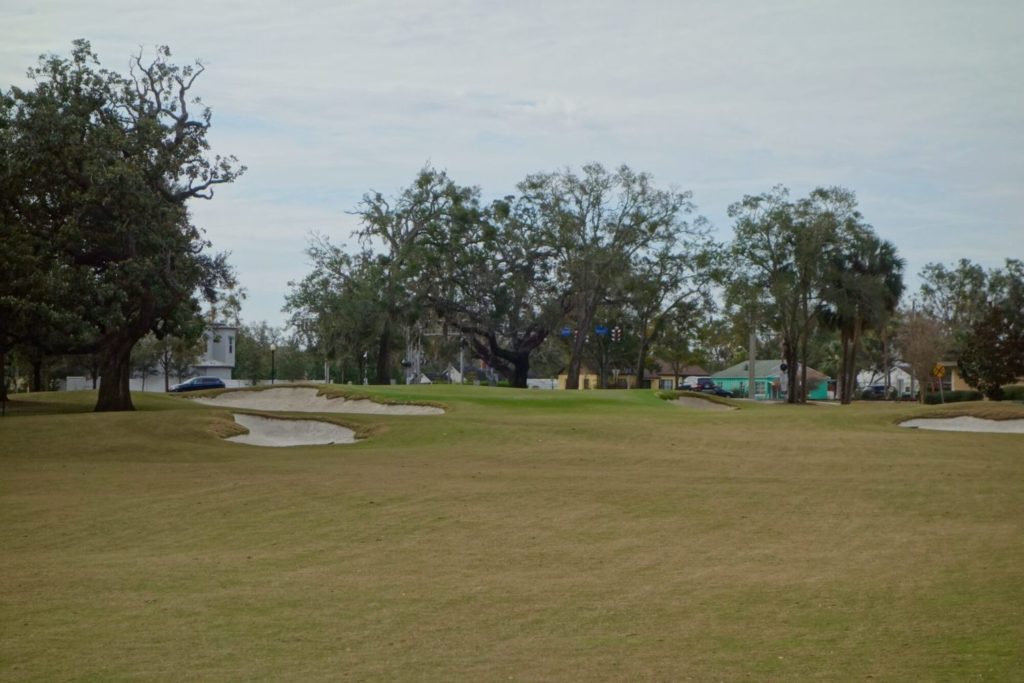
Hole #5 – 354 yards – A principle’s nose set of bunkers on the left narrows this fairway. The green is a gentle double plateau with closely mown surrounds.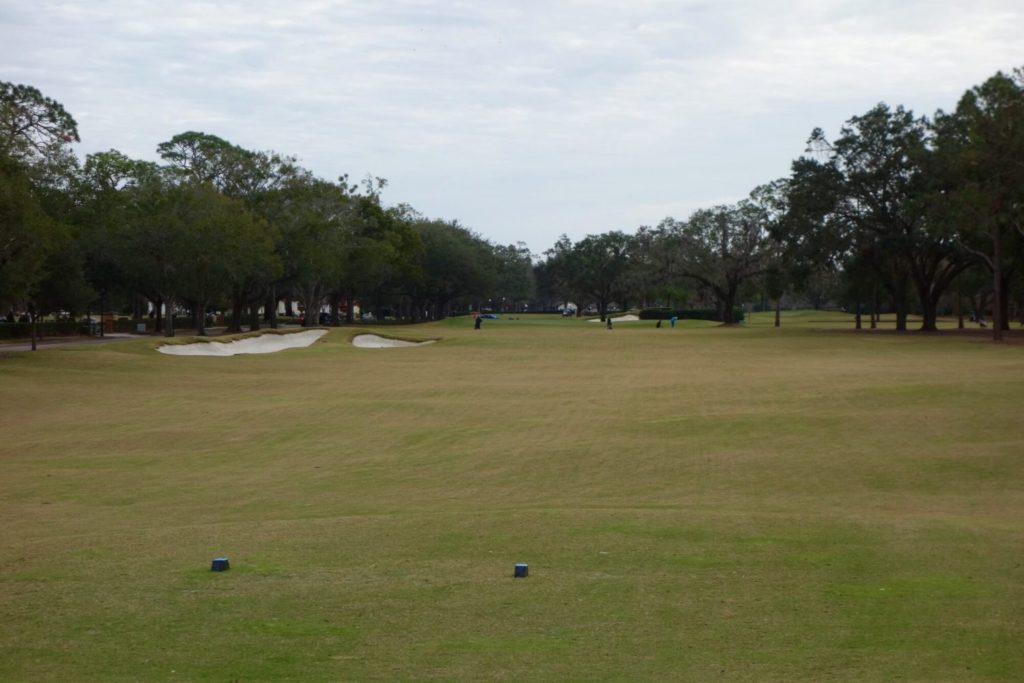
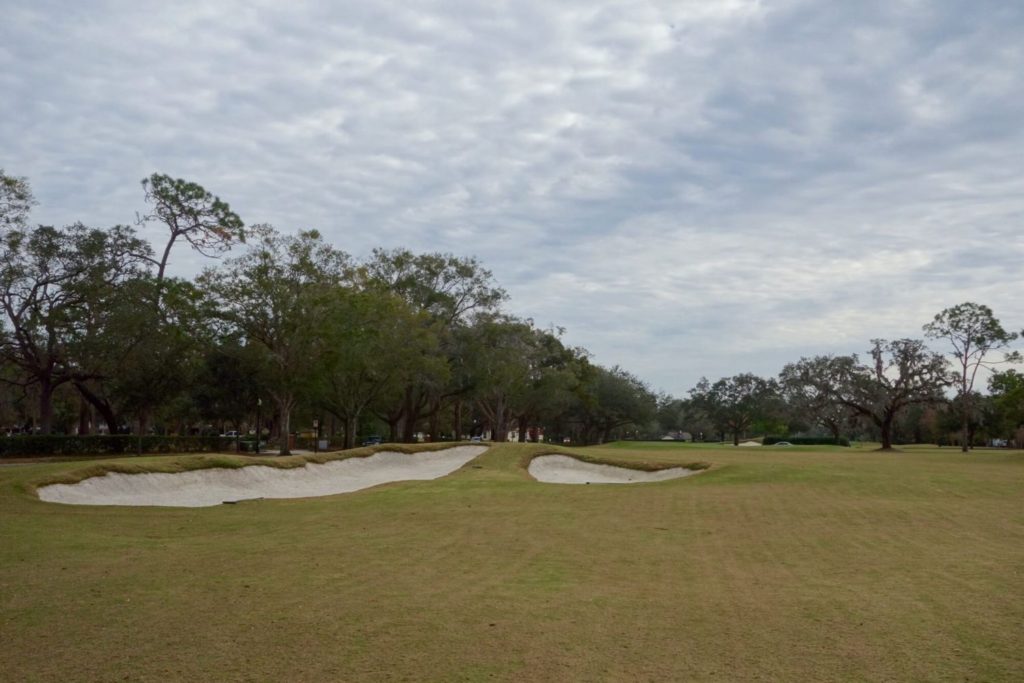
Hole #6 – 262 yards – The 6th is my favorite hole on the course. The green can be seen in the first photo below through the grove of large trees. Long players can hit a large drive over the trees, but equally players can lay up or hit a slinging cut around the wood. The green is a large lion’s mouth template straight not too different from my favorite, the 16th at Country Club of Charleston. The raised back rim of the green provides opportunity for many different styles of approach shot.
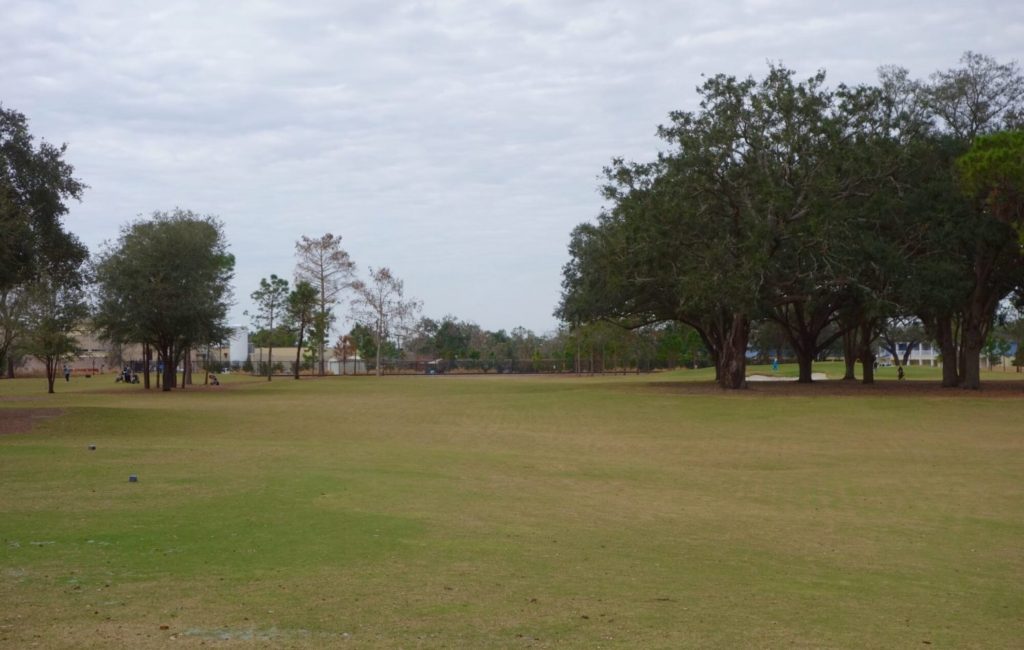
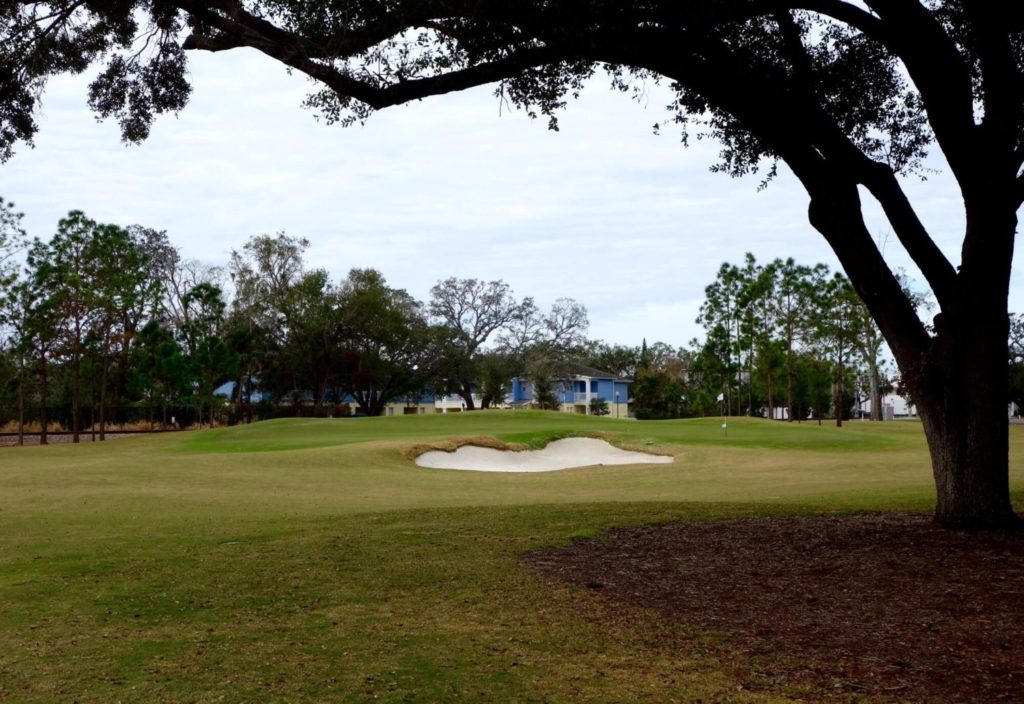
Hole #7 – 179 yards – Photos don’t do the movement in this green justice. A wide range of pins could make this hole fairly easy (the pin in the photos below) or seriously difficult, like back right.
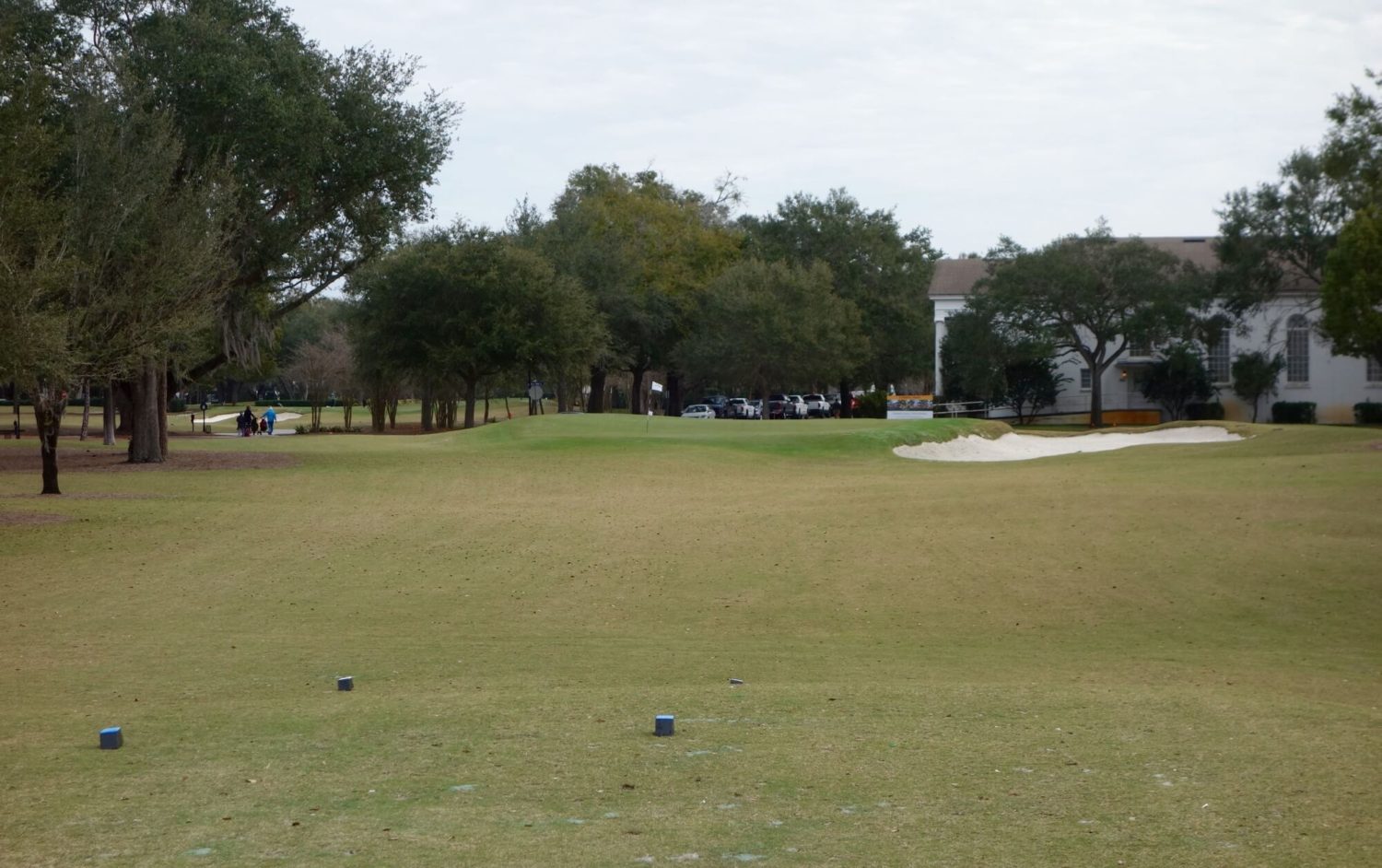
Hole #8 – 145 yards – The second of these back-to-back par 3s has a green that is larger than it appears. This green slopes right to left (a little Redan-like), but I didn’t notice enough movement to really get a ball rolling across the green. A left pin is the most difficult, but a right pin could lull you into a false sense of security with plenty of slope and tight grass to punish.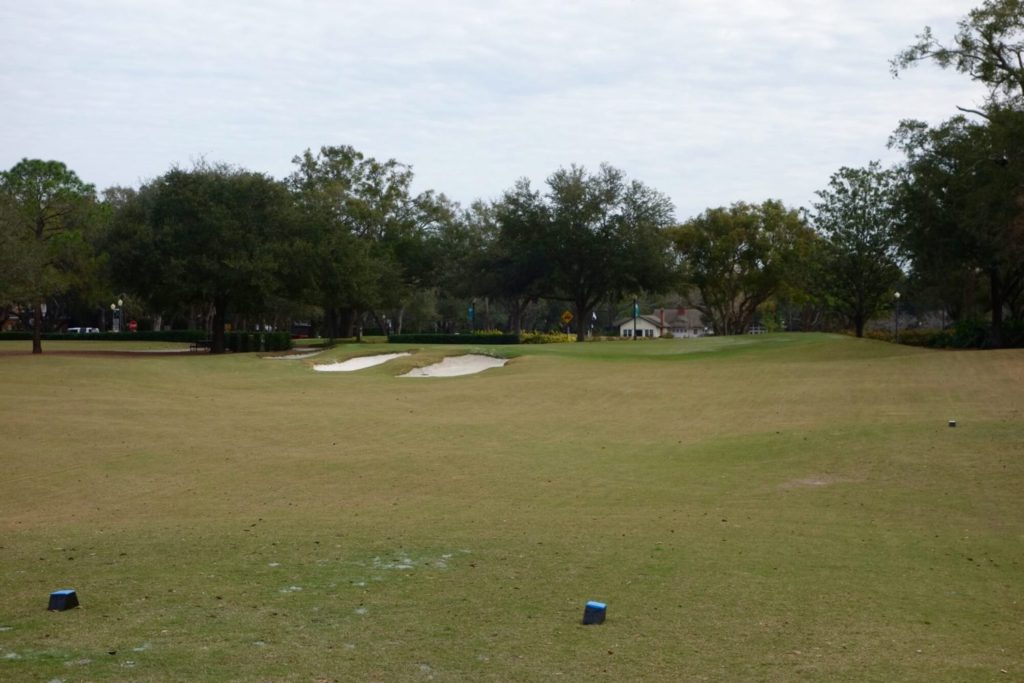
Hole #9 – 228 yards – This short 18th caps off a really fun round. The hourglass-shaped green has a single bunker that subconsciously makes players aim away from the right edge of the green. Front left isn’t the worst place to be.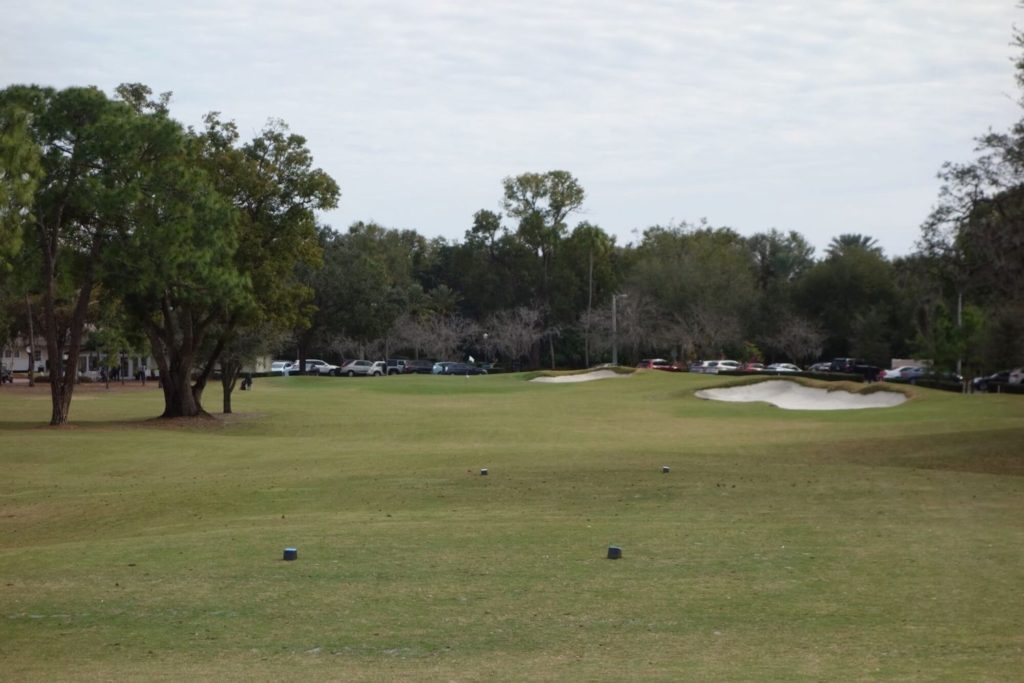

My visit to Winter Park was on a Thursday morning in January and to my surprise, the course was packed. A group of local ladies plays a Thursday morning game and following them throughout the two hours added to the sense that I was playing in a local neighborhood. Following the round some of the golfers looped out onto the sidewalk and pushed their trolleys home.
The story of Winter Park is one of collaboration between a community, the local government, and two architects who had the vision and passion required to create something special. Riley Johns explained to me in an interview for LINKS that the course is now revenue positive and their work has been embraced by the community. Winter Park should serve as a model for municipal and/or struggling courses across the United States.

